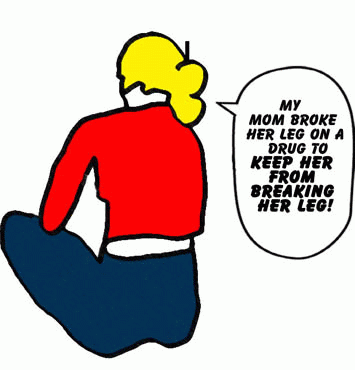Like Vioxx, Merck's expensive "super aspirin" that
caused thousands of cardiovascular events before being recalled, Merck's
Fosamax, the first bisphosphonate bone drug, flew out of the FDA with only a
six-month review.
And like Vioxx, the true dangers of the drug class (that includes Fosamax, Boniva and Reclast) only surfaced after being "tested" on the guinea pig know as John Q Public.
Now, people are asking why the bone drugs were ever approved.
Like Vioxx, there were early indications of Fosamax's risks but they did not prevent wide marketing. Merck received 1,213 adverse-effect reports soon after the drug's approval, which included 32 hospitalized patients with adverse esophageal effects, 17 with "severe" effects, and two who were "temporarily disabled," reported the New England Journal of Medicine. One woman who took Fosamax and only remained upright for 30 minutes not 60 minutes as directions say, had to be admitted to the Mayo Clinic with "severe ulcerative esophagitis affecting the entire length of the esophagus" and had to be fed intravenously.
And there were other safety signals. Bisphosphonate patients were found to be at greater risk for osteonecrosis of the jaw--death of the jawbone--after in-office dental procedures. They were found to be at greater risk for irregular heart beat, intractable pain and at double the risk of esophageal cancer, according to medical reports.
Then, in 2010, after millions of women were taking the widely advertised bisphosphonates, studies revealed they sometimes caused the very fractures they were supposed to prevent!
"Long-term use of osteoporosis drugs linked to hip breaks," said USA Today . "Increased risk of fracture with bisphosphonates," said the Associated Press. "Drugs to build bones may weaken them," said the New York Times, who reported that the thigh bones of patients on bisphosphonates have "simply snapped while they were walking or standing," after "weeks or months of unexplained aching."
Soon after the FDA met in 2011 to determine how long patients could safely remain on the drugs (assuming they were safe at all), an article in New England Journal of Medicine suggested that 90 percent of women who have been getting bone scans, devised by Big Pharma to sell bone drugs say published reports, did not need them. Oops.
(Note: You can view every article as one long page if you sign up as an Advocate Member, or higher).






